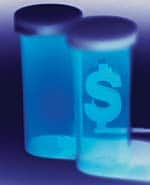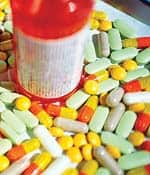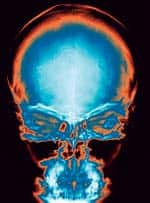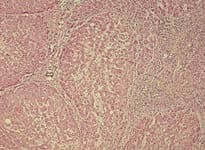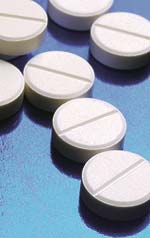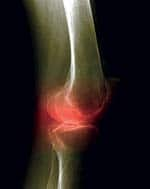Life Extension Magazine®
S-adenosyl-L-methionine, or SAMe, is a naturally occurring compound found in every cell in the human body. This ubiquitous substance is involved in many critical biochemical pathways. Although regulated as a prescription drug in Europe, SAMe is available in the US as a nutritional supplement. Extensive clinical research indicates that SAMe is a safe and effective remedy for depression, osteoarthritis, and liver disease, providing powerful relief without the side effects commonly associated with prescription medications. SAMe and DepressionDepression affects 10-15 million Americans each year, with costs in treatment and lost wages estimated to be as much as $53 billion a year.1 While many prescription drugs are designed to treat depression, they are not always effective and often are associated with troublesome side effects. Fortunately, SAMe appears to offer significant relief from depression. In 2002, the US government published a comprehensive report entitled “S-Adenosyl-L-Methionine for Treatment of Depression, Osteoarthritis, and Liver Disease.”1 The report represents a distillation of data gleaned from numerous published studies conducted around the world through 2000. In order to render its unbiased verdict, the federal Agency for Healthcare Research and Quality (a division of the US Department of Health and Human Services) evaluated data from 102 individual studies. The agency carefully reviewed 47 relevant studies on SAMe and depression; 28 of these studies were included in a meta-analysis of the efficacy of SAMe in countering the symptoms of depression. The agency concluded, “Compared to treatment with conventional antidepressant pharmacology, treatment with SAMe was not associated with a statistically significant difference in outcomes…”1 In plain language, SAMe is just as effective as standard antidepressant drugs at treating depression. The report delivers similar endorsements for the efficacy of SAMe in the treatment of osteoarthritis and a form of liver disease. This good news about SAMe’s efficacy in treating depression is especially important in light of recent news about antidepressants. The Food and Drug Administration (FDA) recently imposed stern warnings regarding the risks associated with the use of the newest class of antidepressant drugs, selective serotonin reuptake inhibitors, or SSRIs. A federal advisory panel responsible for scrutinizing the efficacy and safety of antidepressants for children announced its recommendation in September 2004, after debating the evidence for a year. A “Black Eye” for AntidepressantsThe news for antidepressant drug manufacturers was, in fact, depressing. The panel found that SSRIs not only increase the risk of suicide for some younger patients, but also are often ineffective. The panel urged the FDA to impose its strongest caution—known as a black box warning—regarding the use of this class of antidepressants in children and adolescents.2 In October 2004, the FDA followed the recommendation and mandated warnings for all SSRI drugs. The panel’s investigation came on the heels of several highly publicized incidents in which children and adolescents on the drugs committed suicide, and it highlighted the downside of antidepressant drugs.3 Although only Prozac® is approved by the FDA for the treatment of depression in children and adolescents, other medications such as Zoloft®, Paxil®, and Celexa® are also commonly prescribed to these populations. All of these drugs belong to the SSRI class of antidepressants and are believed to work similarly. The US debate was prompted last year when British officials banned the use of all SSRIs, except Prozac®, for use in children. Despite that action, most experts agree it is unlikely that Prozac® is inherently safer than other SSRIs for use in children and adolescents. Although the various SSRIs differ chemically, their mechanism of action in the body is essentially the same. All inhibit activity at structures known as uptake pumps, located on nerve endings. Most affect the reuptake of serotonin from the synapses, or spaces, between nerve endings. Some affect another messenger chemical, norepinephrine, in a similar manner. These drugs are known as serotonin norepinephrine reuptake inhibitors (SNRIs). Serotonin and norepinephrine are neurotransmitters that regulate mood, sleep, appetite, and emotion, and are involved in a variety of physiological and behavioral functions. By preventing the immediate reuptake of serotonin (and/or norepinephrine), more of the precious brain chemicals remain available to do their intended work.4,5
Antidepressant Therapy’s High CostUnfortunately, even in adults, the depression relief afforded by SSRIs often comes at a steep price, and not just in monetary terms, though most SSRIs are far from inexpensive. The list of potential side effects includes headache, nausea, diarrhea, anxiety, sleep disturbances, weight gain, fatigue, and, most common of all, sexual dysfunction.6-8 The latter strikes up to 60% of patients taking SSRIs, and usually manifests as loss of libido, insufficient lubrication or arousal, or an inability to achieve orgasm.8,9 Among men who experience sexual side effects, erectile dysfunction occurs in up to 90% of cases.10 Understandably, many patients find this side effect particularly distressing. Drug interactions with antidepressants are also a concern. Alcohol, the most common drug of all, may be especially risky. It causes potentially perilous sedation when mixed with antidepressants. Because of these side effects, many patients discontinue their medication at the risk of sinking back into depression. Not all patients respond to SSRIs, even when they do follow the dosage recommendations of the prescribing physician. Treatment failures range from 40% to 60%, and relapse rates are similarly discouraging. According to a recent report from Duke University Medical Center, an analysis of more than a decade of research on the subject shows that recurrence and relapse rates for drug-treated depression range as high as 80%.11 The same report noted that up to 44% of patients starting drug therapy discontinue taking the drug within three months. Many patients (28%) discontinue drug therapy due to intolerable side effects, often within the first month, before the drug takes effect.11
Although they are not perfect, the SSRIs are a vast improvement over previously available drugs and therapies for depression. In the first half of the twentieth century, physicians could offer little more than talk therapy or electroconvulsive therapy (ECT) as treatment for their patients with major depression. Although the former was often ineffectual, the latter works very well. However, ECT is time consuming, requires multiple treatments, and often produces some memory loss, as the brain is literally zapped with electrical current. Understandably, a certain amount of stigma is associated with the use of ECT. According to a survey of thousands of Consumer Reports subscribers who had recently undergone treatment for depression, talk therapy, while often useful, may require at least 13 sessions to achieve relief comparable to that available through drug therapy.12 Thus, when the first true antidepressant drug, a monoamine oxidase inhibitor (MAOI), was introduced in the 1950s, doctors hailed the dawn of a hopeful new era in the treatment of depression. But all was not rosy. MAOIs are particularly risky drugs; their side effects are numerous and often severe, and drug interactions are potentially fatal. The advent of tricyclic antidepressants in the 1960s marked a further advance in treatment. But even tricyclics, such as imipramine and amitryptyline, come with unpleasant side effects. Dosages must be carefully monitored, as therapeutic ranges are narrow and toxic overdoses are potentially fatal. Side effects tend to manifest quickly, but onset of action can take so long (from four to six weeks) that many patients discontinue the drug long before experiencing mood elevation.11,13 A Safer AlternativeFortunately, a safer alternative to antidepressant drugs exists. For more than 30 years, SAMe, a natural substance that occurs in abundance in every living cell of every organism,14,15 has been prescribed in Europe for the treatment of depression. It finally became available in the US in the 1990s, where it is used improve mood, alleviate osteo-arthritis, and promote liver health.
SAMe is believed to banish depression by increasing the synthesis of neurotransmitters that are crucial to normal mood, behavior, and emotion.16,17 Although normally abundant, SAMe levels decline with age and drop dramatically during bouts of depression. A noticeable drop in SAMe levels is also associated with neurological disorders such as Alzheimer’s disease, Parkinson’s disease, and dementia due to HIV complications.18-20 In the body, SAMe is assembled from two building blocks: methionine, a simple amino acid, and adenosine triphosphate (ATP), a molecule that provides energy to cells. SAMe is a sort of biological jack-of-all-trades. It assists in transforming other molecules into more useful entities through a variety of chemical reactions. As a methyl donor, it enables the brain to manufacture vital neurotransmitters, including dopamine, serotonin, and norepinephrine from substrate molecules. Methyl groups are chemical entities—one carbon atom and three hydrogen atoms—that are added to or subtracted from other molecules to change their properties, in essence switching the molecules on or off, and prompting them either to fulfill their potential or to remain dormant. By donating a methyl group to DNA, SAMe acts to regulate production of important proteins involved in everything from immune function to cellular growth and repair.19 One of the components needed to synthesize SAMe in the body is methionine. Without adequate supplies of methionine, SAMe production falters. It is interesting to note that maintaining healthy levels of methionine depends on adequate levels of folic acid and vitamin B12. Depression has been associated with a deficiency in either of these vitamins.21,22 The implication of this is that deficiencies of vitamin B12 and folic acid lead to deficiencies of SAMe, and thus to deficiencies in crucial neurotransmitters such as dopamine, serotonin, and norepinephrine—all of which require the help of SAMe for synthesis.
Comparable Yet Better ResultsRemarkably, in clinical trials, SAMe has proven to be just as effective an oral antidepressant therapy as the tricyclics.14,23,24 The tricyclics are, in turn, about as effective at relieving depression as the newer SSRIs,25 but SAMe has not yet been compared directly to any SSRIs. In clinical trials of SAMe versus a tricyclic and/or placebo, both SAMe and the tricyclic drug were judged equally effective at relieving depression, and both were significantly more effective than placebo.14,23,24,26,27 In fact, in numerous trials, the only significant difference noted between SAMe and a standard tricyclic favors the use of SAMe over the tricyclic: SAMe takes effect faster and has virtually no side effects. In a recent multi-center study conducted in Italy, for instance, researchers found that 1600 mg of SAMe taken orally each day provides the same antidepressant benefit as 150 mg per day of the prescription tricyclic antidepressant imipramine. “However, significantly fewer adverse events were observed in the patients treated with SAMe,” wrote the researchers, in an article published in the American Journal of Clinical Nutrition.14 By contrast, the side effects of imipramine and other tricyclics are so many, and some are so serious, that a vast majority of physicians now prescribes SSRIs rather than tricyclics.28 | |||||
Treating DepressionSAMe is not for everyone. Patients with bipolar disorder (manic depression) should avoid taking SAMe, as it may trigger anxiety or a manic episode. Also, in some clinical trials using especially high doses, some mild, transient gastrointestinal discomfort was reported. However, according to Richard Brown, MD, assistant professor of clinical psychiatry at Columbia University, most patients report feeling energized and healthier within days of starting SAMe therapy. Dr. Brown, along with leading SAMe authority Teodoro Bottiglieri, PhD, wrote Stop Depression Now: SAMe. Between them, they have many years of experience working with patients and SAMe, both in the laboratory and in clinical settings. The doctors note that SAMe has successfully treated depression in some patients who were considered treatment-resistant. In an interview with Life Extension, Dr. Brown praised the multiple benefits of SAMe, noting that at least 47 studies have demonstrated its effectiveness and tolerability. “Animals treated with it live longer and have healthier brains, long into old age . . . The studies really overwhelmingly show that SAMe is equal to other antidepressants,” says Dr. Brown. “But SAMe works faster, and with fewer side effects.” Dr. Brown uses SAMe in his private practice in Manhattan, prescribing it for the treatment of depression and even for conditions such as attention-deficit/hyperactivity disorder. “I use it constantly,” he says. “I think it’s really wonderful either alone or to augment standard antidepressants.” He notes that a government-sponsored clinical trial is currently under way investigating the use of SAMe in Parkinson’s disease. The clinical trial, which is now recruiting patients, is sponsored by the National Center for Complementary and Alternative Medicine, a division of the National Institutes of Health.29 Although its stated goal is to investigate SAMe for the treatment of depression in Parkinson’s disease (depression often accompanies the disease, and available antidepressant drugs tend to exacerbate primary symptoms), there is a chance that SAMe’s ability to boost dopamine levels will address the underlying cause of Parkinson’s itself. “My hope is that it will be classified as a drug one day, so insurance will reimburse patients,” says Dr. Brown. SAMe can be used safely in conjunction with standard antidepressants, and may even facilitate and hasten their effectiveness. Recommended dosages range from 400 to 1600 mg per day, taken on an empty stomach when possible. Some severely depressed patients may require even higher doses.15 SAMe may offer a safer alternative to potentially risky prescription drugs, particularly among children and adolescents. “There’s an epidemic of youth and teen suicide around the world,” says Dr. Brown. “In my opinion, we need to look at more natural approaches to the treatment of depression. I’m glad we have the medications that are out there, but I’m also glad we have alternatives.” Depression is a potentially serious illness, and people should never attempt self-medication without consulting a physician first. It is especially important not to discontinue antidepressant therapy suddenly if you are already taking an antidepressant, due to the risk of unpleasant withdrawal symptoms. But by working with your doctor, you may be able to lower your dose or slowly wean yourself off antidepressant medication, in combination with SAMe therapy.19
Ensuring Liver HealthSince SAMe is responsible for facilitating more than 100 different reactions, it is not surprising that its activities are not restricted to the brain. SAMe serves a crucial role in healthy liver function, and by extension, in the very survival of the body. Indeed, one group of researchers has called SAMe “a control switch that regulates liver function.”30 Through a type of reaction known as transsulfuration, SAMe promotes the production of glutathione, the aptly nicknamed “master antioxidant” used throughout the body to control dangerous free radicals. In the liver, however, glutathione performs one of the organ’s most important functions: assisting in the removal of dangerous toxins.17 Glutathione accomplishes this feat of biochemical agility by attaching itself to toxic molecules such as pesticides ingested with food, and rendering them water soluble, and thus capable of being flushed from the body. When the liver is overtaxed by situations such as chronic alcohol abuse, glutathione levels may drop, decreasing the body’s ability to eliminate ethanol and other poisons. Severe liver damage may result.31 Supplemental SAMe has been shown to boost flagging glutathione levels, and has been used to treat cirrhosis and hepatitis, two highly prevalent conditions that plague victims of alcoholism.32,33 Because SAMe is so important to the liver, up to 80% of methionine in the liver is converted to SAMe. Oral SAMe has been shown to increase glutathione levels in the liver and red blood cells,34,35 and SAMe has been used to treat a variety of liver pathologies, including hepatitis, cholestasis, obstructive jaundice, and cirrhosis.17,30,33,36-40 It has been suggested that SAMe plays a role in preventing the development of liver cancer.41,42 In the laboratory, scientists have shown that SAMe’s ability to induce apoptosis is selective: cancerous liver cells are induced to commit suicide, while normal cells remain untouched.41 SAMe is also known to decrease the harmful effects of immune system chemicals called cytokines, which promote inflammation and pain.43-45 Spanish researchers on the cutting edge of molecular biology recently proposed yet another important role for SAMe, noting that it is converted to 5’-methylthioadenosine (MTA), a sulfur-containing molecule that is present in all mammalian tissues. MTA, the scientists propose, is a previously unrecognized yet important regulator of cellular functions. “MTA has been shown to influence numerous critical responses of the cell including regulation of gene expression, proliferation, differentiation, and apoptosis,” according to the researchers.46 Apoptosis is the process by which cells are identified by the body for programmed suicide. It plays an important role in the destruction of abnormal cells that are cancerous or that may become cancerous. MTA appears to be yet another key molecule dependent on an adequate supply of SAMe.46-48
Promoting Healthy JointsSAMe not only benefits the brain and liver, but also serves as an effective treatment for osteoarthritis. Osteoarthritis is the most common form of arthritis, affecting 15% of Americans at an annual cost of $95 billion. Unlike analgesics and anti-inflammatories such as aspirin and ibuprofen, or the prescription drugs Celebrex® and Bextra®, SAMe not only quells the joint inflammation associated with osteoarthritis, but also may reverse the cartilage degeneration that triggers inflammation in the first place. While anti-inflammatory drugs provide temporary relief from joint pain, there is no conclusive evidence that they stop the tissue degeneration that is the root cause of osteoarthritic pain and inflammation. In fact, evidence suggests that some anti-inflammatories may actually hinder healing.49 In contrast, a report published in the British Journal of Rheumatology concluded that SAMe reversed various indicators of joint tissue damage elicited in the laboratory by tumor necrosis factor-alpha, a dangerous cytokine implicated in a variety of inflammatory diseases.50 Other experiments have shown that SAMe increases proteoglycan synthesis and proliferation rate, thus providing chondroprotective effects.51,52 Proteoglycans attract and hold water, and water is crucial to cartilage’s function in the joints. Common sense and sound medical wisdom tell us that treating an underlying disease process is more beneficial than temporarily masking the symptoms generated by that disease process.
Researchers at the University of Maryland published a meta-analysis of randomized controlled trials of SAMe versus placebo or nonsteroidal anti-inflammatories (NSAIDs), such as aspirin or ibuprofen, for the treatment of osteoarthritis. A meta-analysis applies statistical methods to assess data from a variety of published trials. The researchers concluded, “SAMe appears to be as effective as NSAIDs in reducing pain and improving functional limitation in patients with osteoarthritis, without the adverse effects often associated with NSAID therapy.”53 Given that NSAID use is associated with potentially serious side effects such as gastrointestinal bleeding, NSAIDs may not be the best choice for the treatment of chronic arthritis pain. Italian researchers recently reported that symptoms of stomach-intestinal upset are estimated to affect 10-60% of NSAID users. Peptic ulcers are estimated to affect 10-30% of NSAID users, or 10-30 times the number affected in the general population.54 Researchers in Argentina evaluated the efficacy of SAMe versus the prescription anti-inflammatory drug Feldene® (piroxicam) in a double-blind, randomized, controlled clinical trial. A small group of patients received either 1200 mg of SAMe per day or 20 mg of piroxicam. Patients were evaluated for 84 days. “No significant difference was found between the two treatments in terms of efficacy and tolerability,” the researchers noted. But they added, “Patients treated with SAMe maintained clinical improvement achieved at the end of treatment longer than did patients receiving piroxicam.”55 Equivalent Efficacy, Better TolerabilityA much larger study, conducted on 734 subjects with arthritis of the hip, knee, spine, or hand, was conducted at 33 clinics across Italy. Researchers compared oral SAMe therapy versus placebo and the NSAID naproxen in a double-blind study. SAMe at a daily dose of 1200 mg and naproxen at a daily dose of 750 mg were judged to be equally effective at relieving osteoarthritic pain, and both were significantly more effective than placebo. SAMe’s tolerability was significantly better than that of naproxen, as judged by both patients and physicians. More patients receiving inactive placebo withdrew from the study due to perceived side effects than did patients taking SAMe.56 Another randomized, placebo-controlled, double-blind study conducted at two sites in Indiana evaluated the efficacy of SAMe versus placebo in the treatment of knee osteoarthritis. Patients received 400 mg of SAMe intravenously for five days, followed by 23 days of oral therapy with 600 mg of SAMe. Control-group patients received similar doses of inactive placebo. Patients at the site that initially had milder symptoms showed “significantly greater reduction in overall pain and rest pain than the placebo-treated group,” wrote the researchers. The response among patients at the other site, where cases of osteoarthritis were judged to be more severe, did not achieve statistical significance.57 A long-term study conducted in Germany noted that SAMe therapy induced improvement in clinical symptoms of osteoarthritis within the first weeks of treatment, and found that relief continued unabated for the entire two years of the study period. Patients received 600 mg of SAMe daily for the first two weeks, then 400 mg per day for the remainder of the study period. “SAMe showed good clinical effectiveness and was well tolerated,” noted the researchers, adding that “SAMe administration also improved the depressive feelings often associated with osteoarthritis.”58 By contrast, researchers at Kings College Hospital in London published the results of a randomized, placebo-controlled, five-year study of the long-term efficacy of NSAIDs for the treatment of osteoarthritis, concluding: “Our results do not show long-term benefits from the use of NSAIDs in [osteoarthritis] and the majority of patients had persisting pain and disability despite therapy.”59 Moreover, there is evidence that some NSAIDs may adversely affect joint cartilage. Popular cyclooxygenase (COX-2) inhibitors such as Celebrex®, though effective at relieving inflammation, have not been shown to favorably affect cartilage.49
Less Expensive Alternative to DrugsSpeaking of Celebrex® (celecoxib), a recently published report from researchers at the University of California, Irvine, concluded, “SAMe . . . is as effective as celecoxib in the management of the symptoms of knee osteoarthritis.”60 In a randomized, double-blind crossover study, researchers assigned 56 patients to receive either 1200 mg of SAMe or 200 mg of celecoxib daily for four months. Although Celebrex® brought relief faster, SAMe was ultimately judged equally effective in improving various subjective and objective measures of joint pain and functionality.60 Given the high cost of prescription anti-inflammatories, SAMe appears to be a superior choice for anyone wishing to treat mild to moderate osteoarthritis while saving money at the same time. SAMe offers arthritis relief without the side effects associated with NSAIDs. Given its safety and tolerability record, SAMe supplementation is recommended for anyone interested in maintaining optimal liver function. Finally, SAMe is a valuable and effective tool for managing depression, offering a safe, effective alternative to prescription medications. | |||||
| References | |||||
1. Available at: http://www.ahrq.gov/clinic/epcsums/samesum.htm.Accessed October 21, 2004. 2. Available at: http://www.fdaadvisorycommittee.com/FDC/AdvisoryCommittee/Committees/Anti-Infective+Drugs/020204_Suicide/020204_SuicideR.htm. Accessed October 21, 2004. 3. Available at: http://www.breggin.com/31-49.pdf. Accessed October 21, 2004. 4. Vaswani M, Linda FK, Ramesh S. Role of selective serotonin reuptake inhibitors in psychiatric disorders: a comprehensive review. Prog Neuropsychopharmacol Biol Psychiatry. 2003 Feb;27(1):85-102. 5. Bourin M, David DJ, Jolliet P, Gardier A. Mechanism of action of antidepressants and therapeutic perspectives. Therapie. 2002 Jul- Aug;57(4):385-96. 6. Wilson K, Mottram P. A comparison of side effects of selective serotonin reuptake inhibitors and tricyclic antidepressants in older depressed patients: a meta-analysis. Int J Geriatr Psychiatry. 2004 Aug;19(8):754-62. 7. Degner D, Grohmann R, Kropp S, et al. Severe adverse drug reactions of antidepressants: results of the German multicenter drug surveillance program AMSP. Pharmacopsychiatry. 2004 Mar;37 Suppl 1:S39-45. 8. Gregorian RS, Golden KA, Bahce A, Goodman C, Kwong WJ, Khan ZM. Antidepressant-induced sexual dysfunction. Ann Pharmacother. 2002 Oct;36(10):1577-89. 9. Clayton AH, Pradko JF, Croft HA, et al. Prevalence of sexual dysfunction among newer antidepressants. J Clin Psychiatry. 2002 Apr;63(4):357-66. 10. Rosen RC, Marin H. Prevalence of antide- pressant-associated erectile dysfunction. J Clin Psychiatry. 2003;64 Suppl 10:5-10. 11. Masand PS. Tolerability and adherence issues in antidepressant therapy. Clin Ther. 2003 Aug;25(8):2289-304. 12. No authors listed. Drugs vs. talk therapy: 3,079 readers rate their care for depression and anxiety. Consum Rep. 2004 Oct;69(10):22-9. 13. Nemeroff CB. Improving antidepressant adherence. J Clin Psychiatry. 2003;64 Suppl 18:25-30. 14. Delle Chiaie R, Pancheri P, Scapicchio P. Efficacy and tolerability of oral and intra-muscular S-adenosyl-L-methionine 1,4- butanedisulfonate (SAMe) in the treatment of major depression: comparison with imipramine in 2 multicenter studies. Am J Clin Nutr. 2002 Nov;76(5):1172S-6S. 15. Mischoulon D, Fava M. Role of S-adenosyl- L-methionine in the treatment of depression: a review of the evidence. Am J Clin Nutr. 2002 Nov;76(5):1158S-61S. 16. Lieber CS, Packer L. S-Adenosylmethionine: molecular, biological, and clinical aspects— an introduction. Am J Clin Nutr. 2002 Nov;76(5):1148S-50S. 17. Bottiglieri T. S-Adenosyl-L-methionine (SAMe): from the bench to the bedside— molecular basis of a pleiotrophic molecule. Am J Clin Nutr. 2002 Nov;76(5):1151S-7S. 18. Bottiglieri T, Laundy M, Crellin R, Toone BK, Carney MW, Reynolds EH. Homocysteine, folate, methylation, and monoamine metabolism in depression. J Neurol Neurosurg Psychiatry. 2000 Aug;69(2):228-32. 19. Brown R, Bottiglieri T, Colman C. Stop Depression Now: SAMe. New York, NY: Berkley Books; 1999. 20. McDowell I. Alzheimer’s disease: insights from epidemiology. Aging (Milano). 2001 Jun;13(3):143-62. 21. Papakostas GI, Petersen T, Mischoulon D, et al. Serum folate, vitamin B12, and homocysteine in major depressive disorder, Part 2: predictors of relapse during the continuation phase of pharmacotherapy. J Clin Psychiatry. 2004 Aug;65(8):1096-8. 22. Tiemeier H, van Tuijl HR, Hofman A, Meijer J, Kiliaan AJ, Breteler MM. Vitamin B12, folate, and homocysteine in depression: the Rotterdam Study. Am J Psychiatry. 2002 Dec;159(12):2099-101. 23. Bressa GM. S-adenosyl-l-methionine (SAMe) as antidepressant: meta-analysis of clinical studies. Acta Neurol Scand Suppl. 1994;154:7-14. 24. Bell KM, Plon L, Bunney WE Jr, Potkin SG. S-adenosylmethionine treatment of depression: a controlled clinical trial. Am J Psychiatry. 1988 Sep;145(9):1110-4. 25. Janicak PG, Davis JM, Preskorn SH, Syd FJ Jr. Principles and Practices of Psychopharmacotherapy. Baltimore, MD: Williams and Wilkins; 1993. 26. Salmaggi P, Bressa GM, Nicchia G, Coniglio M, La Greca P, Le Grazie C. Double-blind, placebo-controlled study of S-adenosyl-L- methionine in depressed postmenopausal women. Psychother Psychosom. 1993;59(1):34-40. 27. Kagan BL, Sultzer DL, Rosenlicht N, Gerner RH. Oral S-adenosylmethionine in depression: a randomized, double-blind, placebo- controlled trial. Am J Psychiatry. 1990 May;147(5):591-5. 28. Stafford RS, MacDonald EA, Finkelstein SN. National patterns of medication treatment for depression, 1987 to 2001. Primary Care Companion J Clin Psychiatry 2001;3(6):232-235. 29. Available at: http://www.clinicaltrials.gov/ct/show/NCT00070941?order=1. Accessed October 21, 2004. 30. Mato JM, Corrales FJ, Lu SC, Avila MA. S-Adenosylmethionine: a control switch that regulates liver function. FASEB J. 2002 Jan;16(1):15-26. 31. Martinez-Chantar ML, Garcia-Trevijano ER, Latasa MU, et al. Importance of a deficiency in S-adenosyl-L-methionine synthesis in the pathogenesis of liver injury. Am J Clin Nutr. 2002 Nov;76(5):1177S-82S. 32. Arteel G, Marsano L, Mendez C, Bentley F, McClain CJ. Advances in alcoholic liver disease. Best Pract Res Clin Gastroenterol. 2003 Aug;17(4):625-47. 33. Lieber CS. Liver diseases by alcohol and hepatitis C: early detection and new insights in pathogenesis lead to improved treatment. Am J Addict. 2001;10 Suppl:29-50. 34. Galan AI, Munoz ME, Palomero J, Moreno C, Jimenez R. Role of S-adenosylmethionine on the hepatobiliary homeostasis of glu- tathione during cyclosporine A treatment. J Physiol Biochem. 2000 Sep;56(3):189-200. 35. Loguercio C, Nardi G, Argenzio F, et al. Effect of S-adenosyl-L-methionine administration on red blood cell cysteine and glu- tathione levels in alcoholic patients with and without liver disease. Alcohol. 1994 Sep;29(5):597-604. 36. Lieber CS. S-adenosyl-L-methionine: its role in the treatment of liver disorders. Am J Clin Nutr. 2002 Nov;76(5):1183S-7S. 37. Lieber CS. S-Adenosyl-L-methionine and alcoholic liver disease in animal models: implications for early intervention in human beings. Alcohol. 2002 Jul;27(3):173-7. 38. Lieber CS. Alcoholic liver disease: new insights in pathogenesis lead to new treatments. J Hepatol. 2000;32(1 Suppl):113-28. 39. Tsai SM, Lee KT, Tsai LY. Effects of S- adenosyl-L-methionine on liver damage in experimental obstructive jaundice. Kaohsiung J Med Sci. 2001 Sep;17(9):455-60. 40. Purohit V, Russo D. Role of S-adenosyl-L- methionine in the treatment of alcoholic liver disease: introduction and summary of the symposium. Alcohol. 2002 Jul;27(3):151-4. 41. Ansorena E, Garcia-Trevijano ER, Martinez- Chantar ML, et al. S-adenosylmethionine and methylthioadenosine are antiapoptotic in cultured rat hepatocytes but proapoptotic in human hepatoma cells. Hepatology. 2002 Feb;35(2):274-80. 42. Pascale RM, Simile MM, De Miglio MR, Feo F. Chemoprevention of hepatocarcinogenesis: S-adenosyl-L-methionine. Alcohol. 2002 Jul;27(3):193-8. 43. McClain CJ, Hill DB, Song Z, et al. S- Adenosylmethionine, cytokines, and alcoholic liver disease. Alcohol. 2002 Jul;27(3):185-92. 44. Song Z, Joshi-Barve S, Barve S, McClain CJ. Advances in alcoholic liver disease. Curr Gastroenterol Rep. 2004 Feb;6(1):71-6. 45. Veal N, Hsieh CL, Xiong S, Mato JM, Lu S, Tsukamoto H. Inhibition of lipopolysaccharide-stimulated TNF-alpha promoter activity by S-adenosylmethionine and 5’-methylthioadenosine. Am J Physiol Gastrointest Liver Physiol. 2004 Aug;287(2):G352-62. Epub 2004 Apr 02. 46. Avila MA, Garcia-Trevijano ER, Lu SC, Corrales FJ, Mato JM. Methylthioadenosine. Int J Biochem Cell Biol. 2004 Nov;36(11):2125-30. 47. Hevia H, Varela-Rey M, Corrales FJ, et al. 5’-methylthioadenosine modulates the inflammatory response to endotoxin in mice and in rat hepatocytes. Hepatology. 2004 Apr;39(4):1088-98. 48. Yang H, Sadda MR, Li M, et al. S-adenosyl methionine and its metabolite induce apoptosis in HepG2 cells: Role of protein phos- phatase 1 and Bcl-x(S). Hepatology. 2004 Jul;40(1):221-31. 49. Ding C. Do NSAIDs affect the progression of osteoarthritis? Inflammation. 2002 Jun;26(3):139-42. 50. Gutierrez S, Palacios I, Sanchez-Pernaute O, et al. SAMe restores the changes in the proliferation and in the synthesis of fibronectin and proteoglycans induced by tumour necro- sis factor alpha on cultured rabbit synovial cells. Br J Rheumatol. 1997 Jan;36(1):27-31. 51. Barcelo HA, Wiemeyer JC, Sagasta CL, Macias M, Barreira JC. Effect of S-adenosylmethionine on experimental osteoarthritis in rabbits. Am J Med. 1987 Nov 20;83(5A):55-9. 52. Harmand MF, Vilamitjana J, Maloche E, Duphil R, Ducassou D. Effects of S-adenosylmethionine on human articular chondro- cyte differentiation. An in vitro study. Am J Med. 1987 Nov 20;83(5A):48-54. 53. Soeken KL, Lee WL, Bausell RB, Agelli M, Berman BM. Safety and efficacy of S-adenosylmethionine (SAMe) for osteoarthritis. J Fam Pract. 2002 May;51(5):425-30. 54. Lazzaroni M, Bianchi Porro G. Gastrointestinal side-effects of traditional non-steroidal anti-inflammatory drugs and new formulations. Aliment Pharmacol Ther. 2004 Jul;20 Suppl 2:48-58. 55. Maccagno A, Di Giorgio EE, Caston OL, Sagasta CL. Double-blind controlled clinical trial of oral S-adenosylmethionine versus piroxicam in knee osteoarthritis. Am J Med. 1987 Nov 20;83(5A):72-7. 56. Caruso I, Pietrogrande V. Italian double- blind multicenter study comparing S-adeno-sylmethionine, naproxen, and placebo in the treatment of degenerative joint disease. Am J Med. 1987 Nov 20;83(5A):66-71. 57. Bradley JD, Flusser D, Katz BP, et al. A ran- domized, double blind, placebo controlled trial of intravenous loading with S-adenosyl- methionine (SAMe) followed by oral SAMe therapy in patients with knee osteoarthritis. J Rheumatol. 1994 May;21(5):905-11. 58. Konig B. A long-term (two years) clinical trial with S-adenosylmethionine for the treatment of osteoarthritis. Am J Med. 1987 Nov 20;83(5A):89-94. 59. Scott DL, Berry H, Capell H, et al. The long- term effects of non-steroidal anti-inflammatory drugs in osteoarthritis of the knee: a randomized placebo-controlled trial. Rheumatology (Oxford). 2000 Oct;39(10):1095-101. 60. Najm WI, Reinsch S, Hoehler F, Tobis JS, Harvey PW. S-adenosyl methionine (SAMe) versus celecoxib for the treatment of osteoarthritis symptoms: a double-blind cross-over trial. BMC Musculoskelet Disord. 2004 Feb 26;5(1):6. |


